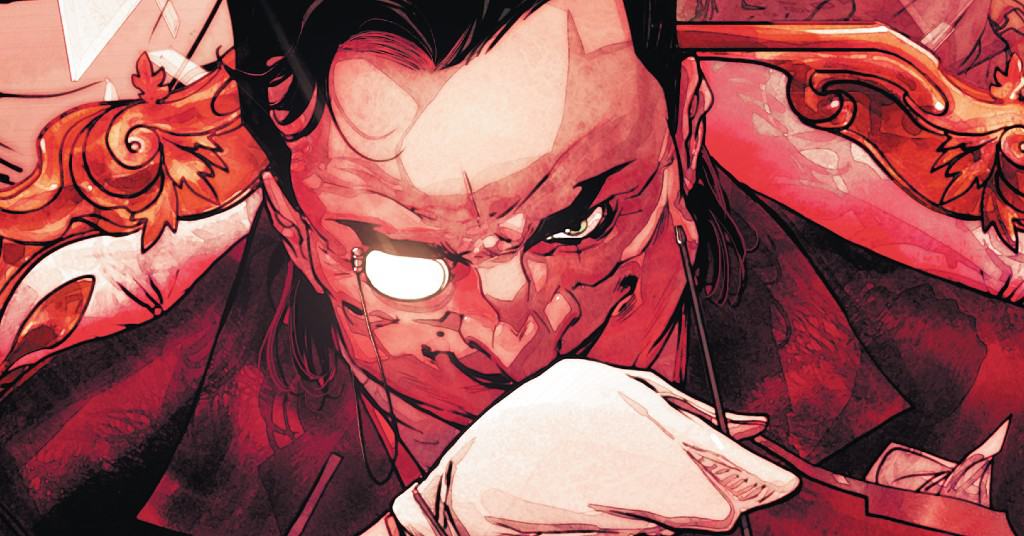The Penguin #7
Recap
In the shocking second chapter of the story of Batman and the Penguin's first meeting, a dramatic change in their relationship has emerged...is Cobblepot ready to go toe-to-toe with the Dark Knight? Or is he already two moves ahead?
Review
The exploration of Oswald’s early days continues in The Penguin #7. King dives even deeper into the Oswald/Batman relationship, and makes us wonder which one of them is more responsible for Oswald Cobblepot becoming The Penguin.
Oswald is consolidating still more power as The Penguin #7 begins. His next step is to call on The Help for the first time. From there he continues building his alliance with Batman, supplying information that will help Batman stop other criminals and, as a byproduct, add to Oswald’s influence. Batman knows that Oswald lies, but believes the good outweighs the bad. Oswald eventually comes to the conclusion that his enemies will suspect that he’s cooperating with Batman if he also doesn’t suffer losses. And the most convincing loss Oswald can suffer will be his own capture at Batman’s hands.
The Penguin #7 works in part as a flipside of how Oswald reclaimed his support structure in the series’ early issues. If anything it strengthens Oswald in the present as compared to his initial rise to power. Oswald isn’t being handed the human infrastructure around him this first time around, but he isn’t having to work for it quite as hard. This plays into what King has done for most of the series which is to build up Oswald’s strength and legend. King isn’t trying to turn Oswald into a hero–he’s most definitely a villain. But King is making him the most powerful protagonist that he can.
More interesting than Oswald’s development in The Penguin #7, though, is how King portrays Batman. He’s a very cynical character. He knows that the relationship with Oswald isn’t entirely symbiotic–Oswald benefits personally in a way that Batman does not. He knows that Oswald lies to him. But he puts up with all the same because of an arguable greater good.
Continuity focused critics might argue that this is inconsistent with Gotham War, a recent storyline based on the premise that crime against the affluent was acceptable as a way of keeping the non-affluent from being targeted. But that’s not what King is doing here. Batman’s choice is “X number of innocent people are victimized if I work with Oswald and Y number are victimized if I don’t.” X is fewer than Y, and that’s what Batman chooses. That said, there is an argument to be made that Batman allowing Oswald specifically to not just stay free but to thrive is out of character. King even has Batman concede that in the end, it’s just as likely that Oswald is the one using him.
King does make a fascinating comment on Arkham Asylum and its revolving door of admittance and releases. It’s not the first time this critique has been leveled on the fairly absurd way Arkham operates in-universe. But King does it via Batman actively taking advantage of that revolving door. Is it out of character for Batman to purposely send someone to Arkham knowing they’ll be released quickly rather than lock him up for years in Blackgate? There’s an easy argument to be made there. On the other hand, if this is what’s going to happen anyway, why shouldn’t Batman take advantage?
The Penguin #7’s art is largely in keeping with the series’ identity in its first five issues. And Maiolo helps it along with consistent coloring choices that mesh with both artists’ styles. Subic does struggle with the consistency of characters’ faces. In close up, Subic’s use of lines to add depth is very liberal. Furrowed brows, sharper cheekbones, narrowed eyes, lumpy fat–these things are frequently depicted in rich detail. When the distance is increased, even slightly, those details disappear and characters’ faces take on a flat affect, almost like a plastic mask. While this isn’t a jarring contrast, it does make grasping characters’ expressions and, as a result, any emotional context difficult.
Subic’s major success is in how he depicts Oswald. The character is almost a walking lump of flesh. He looks insignificant and weak. This is no more apparent than on a splash page where Oswald is standing in the rain, in all black with an umbrella, as somewhat faded looking passers-by fill the background. Even pushed into the foreground as he is thanks to the almost ethereal quality that Subic and Maiolo give to the surroundings, Oswald looks pitiable. He is short, round, and ignored by everyone around him.
One of this series’ defining aspects is how King dives into the head of almost every character in Oswald’s orbit no matter how insignificant. Cowles does a good job organizing the various caption boxes throughout the issues, but several of the color schemes corresponding to the various characters’ captions–sometimes already difficult to read on their own–at times get lost in Maiolo’s coloring for the issue.
Final Thoughts
The Penguin #7 branches out well beyond the titular character. Batman is more prominent, and King uses his criminal protagonist and intertwined first person narrative to examine the hero from a different angle. This level of character examination continues to set The Penguin apart from most other crime series on the shelves.
The Penguin #7: Solving For X
- Writing - 8/108/10
- Storyline - 9/109/10
- Art - 8.5/108.5/10
- Color - 9/109/10
- Cover Art - 8/108/10
